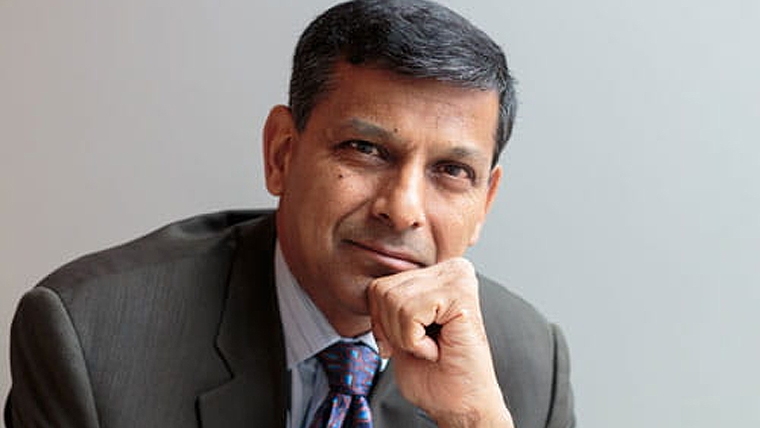
Project Syndicate: You have criticised monetary policymakers’ response to the 2008 global economic crisis, which had profound spillover effects to which they “paid insufficient heed.” In your new book, Monetary Policy and Its Unintended Consequences, you offer a “sketch of a model” showing how monetary-policy spillovers “cause leveraging, booms, and eventually busts in capital-receiving countries.” How would you summarise that model?
Raghuram G. Rajan: Monetary policy is a blunt tool, as many have recognised. With an active financial sector, it also becomes a tool with uncertain consequences, since the financial sector can react to extreme monetary-policy settings in unpredictable – and undesirable – ways. For example, a sustained policy of low interest rates engenders risk-taking and leveraging by the financial sector, leaving it exposed to losses when the policy setting changes.
This has happened so many times that no one can claim to be surprised anymore. Yet monetary authorities sometimes act as if someone else – bank management, regulators, supervisors – is responsible for dealing with the spillovers from their policies. A scapegoat is always found, allowing central bankers to avoid accountability. The US Federal Reserve’s Barr Report on the demise of Silicon Valley Bank is a case in point. The report flags the usual suspects, beginning with the bank’s senior management. But there is no hint that Fed policy – for instance, quantitative easing and its subsequent rollback – might have contributed. This wasn’t even included in the terms of reference for the inquiry!
Of course, there also are monetary-policy spillovers across borders, transmitted through capital flows. In moderate doses, the cross-border flow of source-country money is good. But on a sustained basis, it can become problematic.
PS: Central banks’ far-reaching interventions after 2008 “left them poorly positioned for an environment where fiscal spending has ramped up and inflation, not disinflation, is the key problem,” you write in your book. In fact, when the recent inflationary spike materialised, you observed in 2021, central bankers had become “more likely to make excuses for inflation, assuring the public that it will simply go away.” And yet, in the United States, those who argued that inflation was driven by temporary supply-side factors now claim that recent economic indicators, from prices to employment, have vindicated them. What is this narrative missing, and are the US Federal Reserve’s interest-rate projections for 2024 overly optimistic?
RGR: The debate really is about how much inflation was caused by pandemic-induced supply-side disruptions (which were substantial) and how much was due to the increased demand induced by enormous fiscal stimulus and easy monetary policy.
Monetary tightening began in March 2022. It is now early 2024, the extent of inflation overshoot has been substantial, and the labour market is still tight despite substantial immigration. I think it would be difficult for anyone to argue that policymakers were right in saying, “Don’t worry, everything is transitory.” Indeed, the extent of monetary tightening thus far has still not slowed activity significantly, suggesting the problem was not entirely supply even if we do achieve the desired soft landing. Of course, the jury is still out on whether we will.
That said, just as the Ukraine war and associated price increases initially made the Fed’s job harder, the moribund state of the Chinese economy, immigration, and recent US productivity gains have lately been helping the Fed. Despite our tight economy, price pressures have not been as large as anticipated. I think market projections of rate cuts early in 2024 are optimistic, but I could see cuts happening later in 2024, if all goes as expected – always a big if.
PS: “In trying to do too much,” you write in Monetary Policy and Its Unintended Consequences, “central banks have not just compromised on their fundamental responsibility, price stability, but also added to financial instability.” That is why, you have argued, “financial stability will have to enter the Fed’s rate-setting calculus.” How would that look in practice, and what must regulators do to bolster the stability of the financial system’s “nonbank periphery”?
RGR: At the very least, central banks should have a financial-stability committee – something that is currently missing in the US. This committee should be tasked with understanding and tackling macroprudential risks, including those emanating from monetary-policy settings. Ideally, some members of the financial-stability committee – including the chairman – would also be members of the monetary-policy committee, as is the case in the United Kingdom.
The financial-stability committee would pay special attention to the non-bank financial system. It should have the power to impose macroprudential rules (such as leverage ratios) on the nonbank periphery. At the same time, the monetary-policy committee should recognise the consequences of sustained extreme policy settings on financial stability, and should cease and desist from monetary adventurism. This is a somewhat milder prescription than making monetary policy actively lean against the wind. But it nonetheless echoes this prescription, by encouraging monetary authorities to maintain a bias toward normalisation when policy is extremely accommodative.
By the Way…
PS: In your book, you present several possible changes that would lead central banks to adjust their behavior in ways that mitigate external spillovers. Are some more compelling than others, particularly in view of the “likely advent of central bank digital currencies and global stable coins”? Is there anything emerging economies can do unilaterally to protect themselves from these spillovers?
RGR: In an ideal world, the industrialised countries – with relatively stable politics and strong institutions – would maintain disciplined monetary policy, recognising that emerging markets have more volatile politics and less credible institutions. But in recent years, politics in industrialised countries has become increasingly fractured, driving more populist and extreme macroeconomic responses. Against this backdrop, emerging-market authorities must take action to protect their economies against spillovers. This means building buffers like foreign-exchange reserves when they can, and maintaining more macroeconomic discipline.
Such an approach does reduce emerging markets’ policy space: they cannot spend as freely protecting their citizens during downturns or in response to calamities. It also requires emerging-market governments to target their redistributive policies better – for example, offering support only to the very needy. This shifts more of the burden of managing macroeconomic volatility away from the government and to the average emerging-market citizen, which is not ideal. But it is the reality emerging markets now confront.
PS: You conclude Monetary Policy and Its Unintended Consequences by suggesting that we may be moving toward a “low-inflation, low-growth world,” which central banks do not yet understand very well. What changes to central-bank mandates and frameworks might this new environment require?
RGR: I am all for going back to the traditional inflation-targeting framework, which is effective against high inflation. So long as low inflation does not transform into galloping deflation, I would not worry too much about undershooting the target. In other words, I would be happy with an inflation framework that aims to get inflation within a band – set around the traditional 2% midpoint in industrialised countries – and is mildly asymmetric in how it operates, in that the central bank frets less when there are sustained but mild undershoots of the lower limit of the band.
PS: Discussing two talks given nearly a decade apart, you highlight ways your stance has not changed. “Perhaps I am inflexible and incorrigible,” you write in Monetary Policy and Its Unintended Consequences, “or perhaps I am on the side of the angels here.” What ideas or developments have challenged your thinking over the last couple of decades, and can you highlight areas where your conclusions have changed?
RGR: I certainly have become much more sceptical of the view that the private financial sector has the best incentives in place, and can look after itself. What I observed in the buildup to the 2008 global financial crisis put paid to that. At the same time, one must remain sceptical of the ability of regulators and supervisors to see around corners (or even in the rearview mirror). So, financial stability is never an easy objective, because so many of the participants do not behave in predictable risk-reducing ways.
Raghuram G. Rajan, former governor of the Reserve Bank of India, is Professor of Finance at the University of Chicago Booth School of Business and the author, most recently, of The Third Pillar: How Markets and the State Leave the Community Behind (Penguin, 2020). Copyright: Project Syndicate, 2024, published here with permission.
8 Comments
Excellent. JFoe….
lol, comment below
Blah Blah Blah...Karl Marx...blah blah blah...
Curious how an excellent article like this attracts little interest.
Not too hard to work out.
It's an informative, interesting and very well written article but that doesn't mean that readers such as myself have the knowledge or experience to analyze it and comment in a constructive way. The average Joe is much like a person bobbing on the surface of an ocean of communication that they are almost powerless to influence ( especially at central bank and private bank level), even while the life jacket of our civilized society helps keep them afloat. I can only hope that the Reserve Bank Officials and others steering the financial ship actually read and have cognizance of this article.
The only intellectuals in the village!
Lots to agree with here - like the need for central banks to provide tighter guard rails (macroprudential tools) to stop the financial (casino) sector being reckless dicks. I would add the need to use credit tools to ensure finance flows preferentailly to productive enterprises (but then I'm an old Keynesian). Also good to see it recognised that central banks' monetary policy decisions have unintended consequences - particularly in the financial sector. Central banks spent years pushing the finance sector to hold nice safe Govt Bonds - and then they hiked rates and crashed the value of the Bonds that the finance sector was holding as collateral!!
However, the author, as a former central bank chief, has an obvious blindspot. He does not realise that the unintended consequences of monetary policy often far outweigh the intended consequences.
For example, the US Fed rate hikes have caused instability across the US finance and commercial real estate sector, and done serious damage outside the US in emerging economies that have floating rate debt in US dollars. However, no serious analyst thinks that higher US rates have done anything to moderate price increases in the US. There is literally no evidence of the 'causal chain' (below) that is expected after rate hikes...
higher credit costs >>> reduced business investment >>> fewer jobs >>> suppressed wages >>> slower increases in prices
When faced with these facts, central bankers (and brainwashed economists) seriously try and argue that prices moderated because people expected them to. Why did they expect them to? Because the central bank hiked rates and obviously this is top of mind for price setters and consumers. It's voodoo. Ffs.
Closer to home, NZ rate hikes have driven huge transfers of money from mortgagors / workers to boomers with savings and shares. This has crashed consumer demand, and we are now seeing unemployment and benefit claims fly up at an incredible pace. Meanwhile price increases have moderated in line with global trends and reduced input costs. Look at fruit and veg prices for example. Now ask whether higher interest rates have helped or hindered price moderation?

We welcome your comments below. If you are not already registered, please register to comment
Remember we welcome robust, respectful and insightful debate. We don't welcome abusive or defamatory comments and will de-register those repeatedly making such comments. Our current comment policy is here.